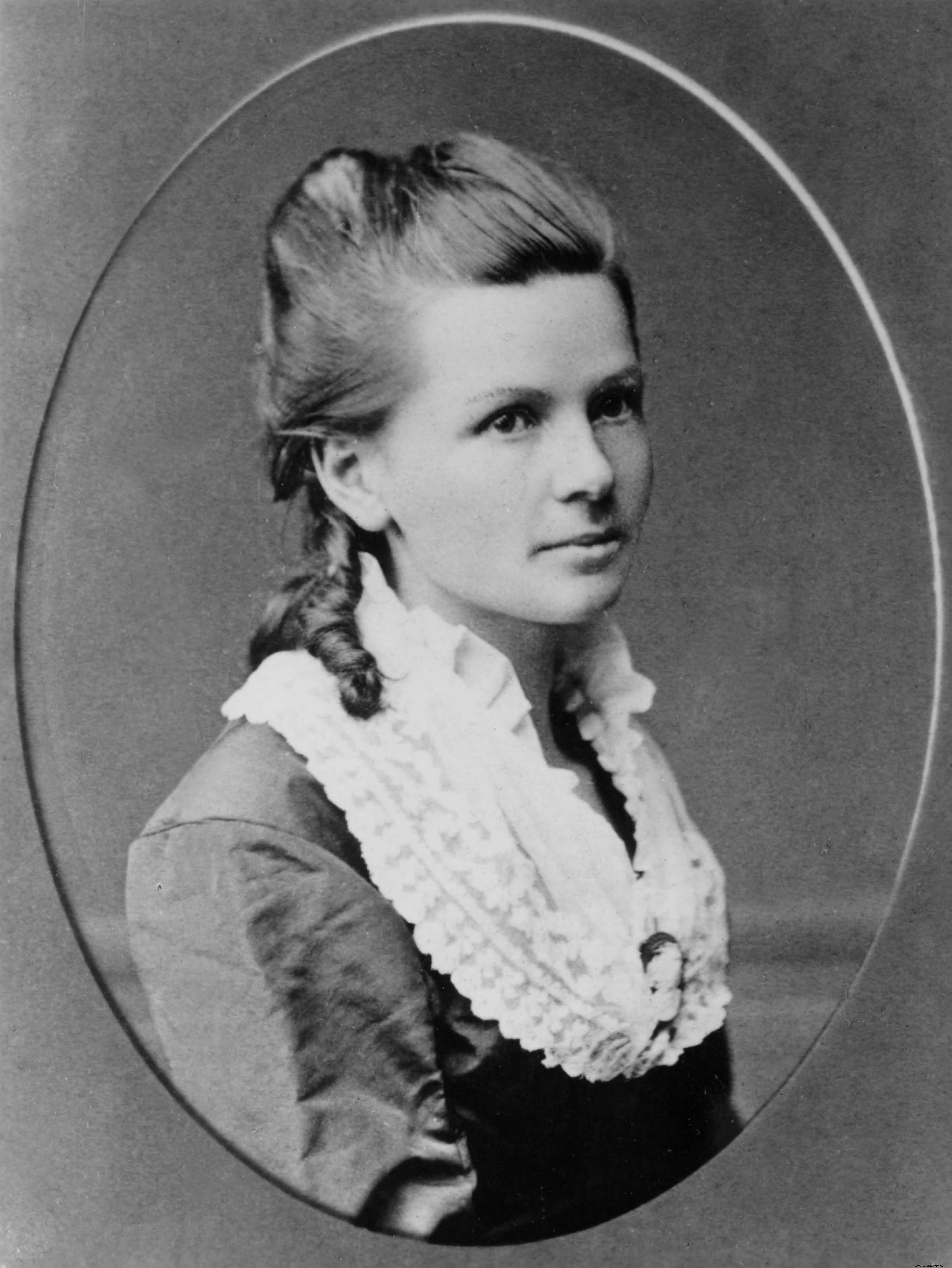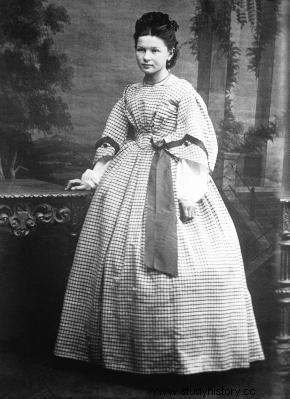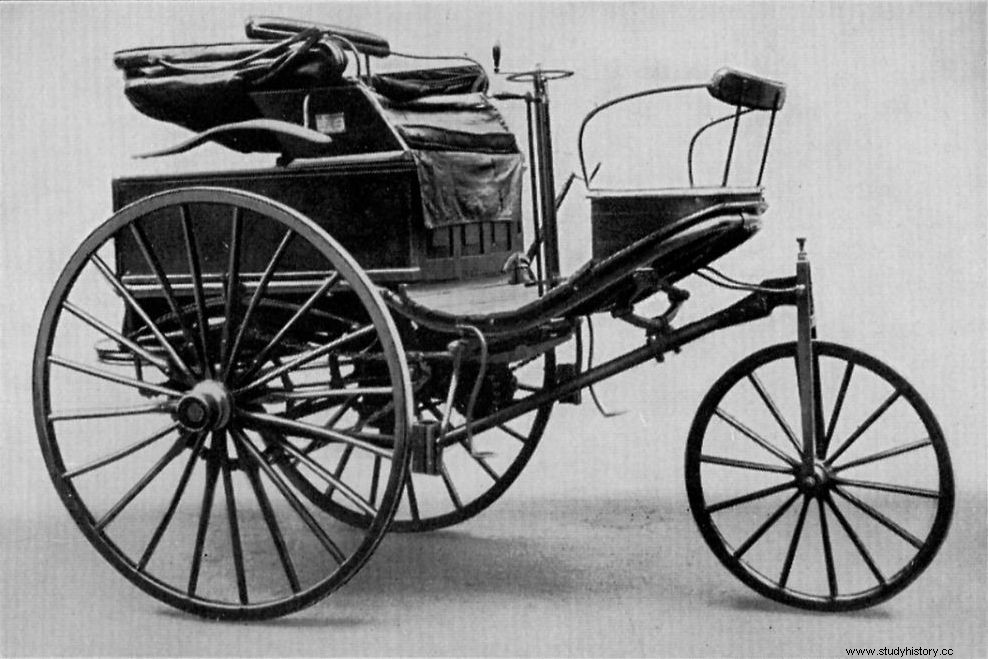German automobile pioneer and inventor, Bertha Benz (1849 – 1944) was the first person in 1888 to drive a car over a long distance, outside the framework of short and supervised tests. It also developed the first brake pads.
Passionate about technology

Bertha Ringer was born on May 3, 1849 to a wealthy family in Pforzheim, southwestern Germany. From childhood, she was very curious about the functioning of her surroundings and was passionate about the technical explanations of her father, on the mechanisms of locomotives in particular. At school, she is passionate about science and proves to be gifted and intelligent.
In June 1869, young Bertha met a German engineer five years her senior, Carl Benz, who was working on designing a horseless vehicle and developing engines. They share the same passion for technology and engineering, and fall in love. Bertha does not listen to the advice of her father, who is worried to see her commit to a penniless man whose projects have not been proven. She believed so strongly in her fiancé's ideas that even before their marriage, she invested her entire dowry in the first company founded by Carl Benz.
Bertha and Carl married in July 1872; they will have five children between 1873 and 1890:Eugen, Richard, Clara, Thilde and Ellen.
The first "horseless cart"

The early years are financially complicated for the Benzes, as Carl, alongside business selling building materials, works on his horseless wagon project using Bertha's funds. The company Benz &Cie which he co-founded in 1883, together with Max Rose and Friedrich Wilhelm Eßlinger, met with some success in the production and sale of industrial machinery and engines, which gave Carl the opportunity to develop theBenz Patent -Motorwagen Number 1 (or Benz 1 tricycle), a three-wheeled vehicle powered by an internal combustion engine, and one of the first automobiles in history.
The Benz 1 tricycle, which can reach a speed between 13 and 16 km/h, was presented to the public in 1886, patented and produced in several copies, quickly followed by versions 2 and 3. Although the tests were satisfactory, Carl barely to interest the public in his invention and above all to sell it. Deeming her husband to be too cautious in promoting, presenting and marketing his invention, Bertha, who still believes in him so much, decides to strike a blow.
From Mannheim to Pforzheim
In the early morning of August 5, 1888, without informing Carl, Bertha Benz took her sons Eugen and Richard – aged 15 and 13 – aboard a Benz 3 tricycle, for a 106 km journey from Mannheim to Pforzheim; a visit to her mother which makes her the first person to drive a car over a long distance, outside the very controlled framework of very short tests conducted in the presence of mechanics. Also off the beaten track:car roads do not exist.
The journey, carried out at an average speed of 15 km/h, takes them the whole day. During the journey, Bertha must compete in ingenuity to meet the technical and mechanical challenges presented to her. She must stop at a pharmacy to find petroleum ether, necessary for the vehicle to operate and which can only be found at apothecaries. She cleans a clogged fuel line with her hatpin, and uses her garter to insulate a cable. Thanks to the assistance of a blacksmith, she has a chain repaired. On the climbs, the vehicle speeds not being sufficient, Eugen and Richard are called upon to push. Finally, Bertha hires a shoemaker to repair the car's wooden brakes with leather, improvising the first brake pads. They arrive after dark and Bertha telegraphs her success to her husband, before returning – still by car – a few days later.

The journey of Bertha and her sons has a great impact, as she had foreseen, and marks the history of the automobile. Thanks to this first long-distance test, corrections and improvements are made to the models, to improve the braking system or better pass the sides in particular. Through her brilliance, Bertha arouses public interest in the automobile, shows the usefulness it can have and the need to carry out driving tests on a larger scale to develop models.
The Bertha Benz Memorial Route
The decades that followed saw the development of the automobile and its gradual adoption by the general public. In 1914, Carl received the title of Doctor honoris causa from the University of Karlsruhe where he studied; he died in April 1929. In 1944, Bertha Benz was made Honorable Senator by the University of Karlsruhe, for its 95 th anniversary. She died two days later, in May 1944.
In 2008, the Bertha Benz Memorial Route , retracing its route from Mannheim to Pforzheim, is set up, recognized as a German tourist route and member of the European Route of Industrial Heritage.

